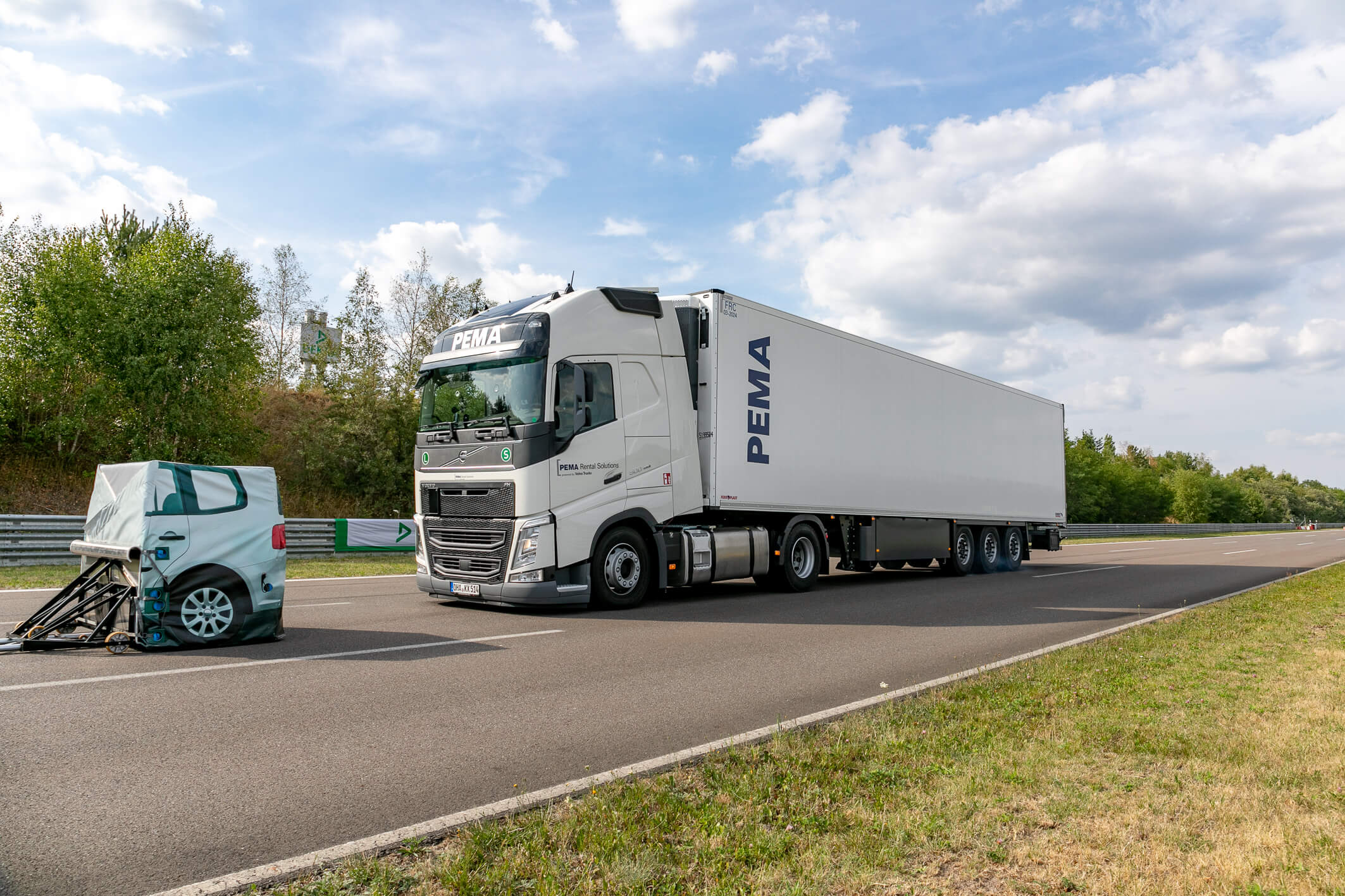Truck Assistance Systems Save Lives
Test drives at the DEKRA Technology Center on the Lausitz race track once again demonstrate the potential benefits of assistance systems in trucks
DEKRA’s accident experts are all too frequently called to serious rear-end collisions involving commercial vehicles—particularly at the end of traffic jams on highways. “The sheer mass of a fully laden truck of course means that the consequences of any accident they are involved in are particularly serious,” said DEKRA Management Board member Clemens Klinke at the IAA Commercial Vehicles 2018 in Hanover. “In many cases, modern emergency braking assistance systems can prevent, or at least substantially mitigate the severity of, such accidents.” The emergency braking assistance system first warns the driver promptly before a looming collision with an obstruction detected by radar and/or a camera. If the driver does not react, the system automatically initiates braking.
Since 2015, emergency braking assistance systems have been mandatory for most newly registered, series-produced trucks weighing eight metric tons or more, and in November 2018, the requirement to equip newly registered, series-produced commercial vehicles weighing 3.5 metric tons or more entered into force. However, the regulation merely stipulates that the systems reduce the speed of the vehicle—with pneumatic brake systems, for example, a 20 km/h reduction in speed is stipulated when the vehicle is approaching a stationary obstruction. But many of the systems available today perform much better than the requirements laid down in this regulation. “Depending on the initial speed, the vehicles can in most cases come to a complete standstill even before a stationary obstruction, thereby preventing a collision. This was demonstrated in our test drives involving various makes of truck at our test site on the Lausitz race track,” explains DEKRA Management Board member Klinke. “In the other cases, the systems reduce most of the kinetic energy through automatic emergency braking, with the result that a collision is ultimately much less severe.”
To ensure that the current emergency braking assistance systems can have an even greater impact on safety, they have to be fitted on the largest possible scale in fleets. “We are therefore calling on the transport industry to equip its vehicles with the best emergency braking systems available and not to limit themselves to the minimum legal requirements,” says Clemens Klinke. Some manufacturers offer systems that satisfy the minimum specification as standard, with the latest and most powerful emergency braking systems available only as an optional extra. “This is why we are also calling on commercial vehicle manufacturers to install the latest generation of safety systems as standard. In addition, we are counting on development work moving ahead to make the systems even better.”
In order for emergency braking assistance systems to have any effect at all, however, it is crucial that they are not deactivated during a journey and that drivers are fully aware of the functions of their emergency braking system. “Some might mistakenly deactivate their emergency braking assistance system because they find the adaptive cruise control (ACC) function annoying while driving,” the DEKRA Management Board member points out. It would of course be devastating if the worst came to the worst and an accident occurred that active emergency braking assistance could have prevented.
Nevertheless, the DEKRA expert warns that truck drivers should not just blindly rely on their emergency braking system. “The worst thing that could happen would be for drivers to become complacent and do other things behind the wheel, in the mistaken belief that the emergency braking assistance system will get them out of any trouble,” says Klinke. “Assistance systems are designed to assist drivers if they make a mistake—no more and no less.”
This applies not least to turning assistance systems. While accidents in which a turning truck driver cannot see a cyclist or pedestrian in their blind spot and hits them as a result are relatively rare, this kind of accident nearly always has particularly grim consequences. Only one truck manufacturer currently offers a factory-installed turning assistance system; others are in development. In addition, various retrofit solutions are available. They all use radar sensors or cameras to monitor the blind spot alongside the truck—an area that the driver can see neither directly nor using their mirrors—and warn the driver accordingly if they detect a person.
Despite its safety potential, the turning assistance system alone cannot eliminate the risk of accidents occurring when a truck turns. In this context, DEKRA also sees flashing side marker lights as an important contribution to greater road safety. These lights help cyclists and pedestrians alongside the truck see that the truck driver intends to turn. DEKRA also ultimately believes that it is important to raise awareness among cyclists and pedestrians of the dangers of blind spots—for example, in the form of eye-catching stickers on the back of trucks or with awareness-raising activities in schools.

